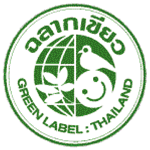
Green Branding – Cashing in on the Eco-Market
By Jo Bowman
As consumers rally to the climate change challenge, companies have rapidly learned that being green – and being seen to be green – makes good business sense. Certification marks figure prominently among the proliferating eco-labelling schemes, which signal a company’s climate-friendly credentials. In this article for WIPO Magazine, journalist Jo Bowman, who has worked extensively with the consumer research sector, takes a look at the flourishing business of green branding.
For anyone who thought their green obligations stopped with a bit of household recycling, the last couple of years have proved a stark awakening. Al Gore’s documentary, An Inconvenient Truth, the international Live Earth concert series and intensive media coverage of the United Nations December summit in Bali have helped make climate change a universal and pressing concern.
Among mainstream consumers there’s now a real sense that environmental protection is urgent. They want to live a greener life, and their spending patterns reflect their desire to see the brands they use go green as well. In the US alone, consumer spending on products and services perceived to be environmentally friendly will double to US$500 billion this year, according to the 2007 Green Brands Survey conducted by Landor Associates, Penn, Schoen & Berland Associates, and Cohn & Wolfe.
Paying more for green alternatives

The EU Ecolabel aims to stimulate both supply and demand of products with reduced environmental impact. Criteria for its use are set by the EU Ecolabeling Board.
Consumers not only want to buy green, they’re prepared to pay more for it. Nearly 70 percent of some 2,000 people surveyed in the U.S., U.K., Germany, the Netherlands, Australia and Japan, said they would pay a premium for green energy alternatives, such as wind and solar power. According to last year's poll by IBM Global Energy & Utilities Industry, Australians were the most willing to pay more for renewable energy, but Americans said they would pay the highest premium – 20 percent or more.
This greening of consumer consciences is not just taking place in the West. The Eye on Asia study by Grey Global Group found that 86 percent of people in the region rate protecting the environment more highly than economic development, and 75 percent say they’re willing to pay extra for green products. Chris Beaumont, CEO of Grey in Japan, says the levels of concern appear higher in less affluent countries – Bangladesh, the Philippines, India and Vietnam – than in Japan and other wealthy markets.
It is not just altruism which fuels the demand. Consumers are also motivated by rising energy prices and tax policies that punish polluters. The British national budget for 2008, for instance, introduced vehicle tax breaks for new cars with the lowest carbon emissions, while almost doubling taxes on the least-efficient cars.
Consumer brands have been quick to respond to shoppers’ desire to buy green. Wal-Mart announced last year that it would provide carbon ratings for all its electronics items. Procter & Gamble, the consumer goods giant behind such brands as Gillette and Olay, has committed to selling $30 billion worth of greener products over the next five years. Rival Unilever – makers of Dove and Lipton – has pledged to reduce waste and water consumption in its supply chain. In Brazil, Unilever and Wal-Mart have built “sustainable houses” within stores, made from recycled products and showing how to make everyday living more eco-friendly.
Eco-labelling

Chile's Sustainable Forest Management Certification system requires forests to be used in a way that they do not compromise the needs of future generations.
Certification marks, labels and logos are increasingly being used by brand owners to signal their green credentials and so boost their market share. A properly controlled eco-label offers consumers a guarantee that a product or service has been independently verified to meet given environmental standards. Such schemes may be run by government agencies, consumer protection groups, industry associations or other non-governmental organizations.
In Australia, for example, the Greenhouse Friendly™ label is a registered certification mark, administered by the Government Department of Climate Change. To be eligible to display the mark, products and services must pass a rigorous verification and certification process. “Displaying the Greenhouse Friendly logo means your products and services stand out from the crowd and it gives you a marketing edge,” says the Australian Government’s sales pitch. Another Australian certification mark, the Good Environmental Choice label, is managed by a non-profit organization. A member of the Global Ecolabelling Network, it has mutual recognition arrangements with Thailand’s Green Label, the Korea Eco-Label, Germany’s Blue Angel mark and other national programs.
In the US, more than 2.5 billion products bearing the Energy Star logo have been sold since the program was launched back in 1992 by the US Environmental Protection Agency and the Department of Energy. “We know it has a very positive effect,” says Energy Star communications director, Maria Vargas. She cites consumer research according to which 79 percent of people who had knowingly bought an Energy Star product said the label had influenced their decision to buy.

The Thai Green Label Scheme was launched in 1994 by the Ministries of Environment and Industry. The symbol signifies hope and environmental harmony.
Some companies are developing their own eco-standards and product labelling. BASF is one; Philips is another, launching its Green Logo and tick symbol last year to identify products with “significantly better energy efficiency than the nearest competitor products.” Shai Dewan of Philips in the Netherlands says the development of an additional eco-logo in preference to existing third-party stamps of approval stemmed from the international nature of the Philips business and the variety of products it makes. “There are several logos for various criteria, and in the three sectors we represent there’s no single logo across all three that represents a green product and some logos only exist in certain countries,” she says.
The greenwash backlash
Jacob Malthouse, a co-founder of the Vancouver-based consumer advice site ecolabelling.org, says eco-labels can, however, be something of a mixed blessing for consumers. “The sheer number of labels available can be enough to make your shopping trolley spin,” he says. In Britain alone, there are at least four labels to tell consumers about a product’s carbon footprint. To help consumers navigate through the eco-label maze, the ecolabelling.org website, launched this year, details more than 300 eco-labels and sets out who runs them and what they mean. A further 150 will be added soon.
The potential for confusion is risky, explains Jacob Malthouse. “People see ecolabels and think ‘perfect, this is green.’ Then they start to hear about greenwashing and they question the credibility of what’s being done.” Greenwashing, the term used to describe companies trumping up their green credentials without any real basis, can backfire on a brand.
Getting ahead
The Carbon Neutral Company, which offers consulting services and carbon offsetting packages to businesses seeking to go carbon neutral, stresses that the business benefits of going green – and being seen to be green – come not just from satisfying consumer demand. Reducing energy consumption cuts costs, influences investors, and puts companies ahead of legislation that is likely in future to oblige companies to reduce their environmental impact.
On the shop floor, however, it’s the consumer that’s king. Grey’s Chris Beaumont sums up: “Ask anyone whether they’re concerned about the environment and it’s almost an academic question. Everybody is.”
Related Links
The WIPO Magazine is intended to help broaden public understanding of intellectual property and of WIPO’s work, and is not an official document of WIPO. The designations employed and the presentation of material throughout this publication do not imply the expression of any opinion whatsoever on the part of WIPO concerning the legal status of any country, territory or area or of its authorities, or concerning the delimitation of its frontiers or boundaries. This publication is not intended to reflect the views of the Member States or the WIPO Secretariat. The mention of specific companies or products of manufacturers does not imply that they are endorsed or recommended by WIPO in preference to others of a similar nature that are not mentioned.